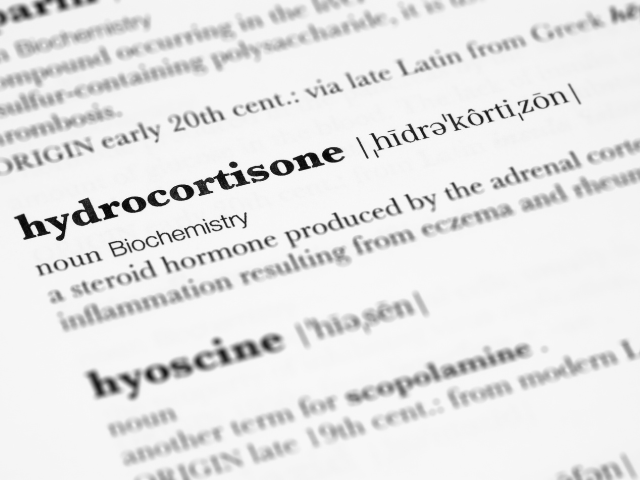Use of Hydrocortisone in Pregnant Women, Children, and the Elderly
When given to a pregnant woman, hydrocortisone crosses the placenta and is widely distributed in breast milk. If used chronically in the first trimester during pregnancy, it can raise the chances of cleft palate in the offspring. However, topical use of hydrocortisone is safe in pregnant patients. But ask them to apply it sparingly. It should be used only in the affected area.
In children, a high dosage of long-term hydrocortisone therapy can decrease short-term growth and increase cortisol secretion. In the elderly population, it can put them at risk of developing hypertension and osteoporosis.
Contraindications of Hydrocortisone
Hydrocortisone should not be used in patients hypersensitive to it, those having a systemic fungal infection that can be exacerbated with corticosteroid therapy, and in premature infants. It shouldn’t be administered if the patient is concurrently injected with a live or attenuated virus vaccine. Intramuscular administration of hydrocortisone is contraindicated in patients with idiopathic thrombocytopenic purpura.
Hydrocortisone should be given with extreme caution in patients with: thyroid dysfunction, hypertension, liver cirrhosis, osteoporosis, thrombophlebitis or thromboembolic tendencies, heart failure, diabetes, seizures, respiratory tuberculosis, myasthenia gravis, cataracts, glaucoma, increased intraocular pressure, acute myocardial infarction, renal or hepatic impairment, untreated systemic infections, active viral infections. The same goes for elderly patients and immunocompromised patients with diabetes, renal impairment, and open wounds.
Hydrocortisone should not be applied on post-surgical wounds, cuts, or abrasions, as it can hinder healing.
Hydrocortisone Interactions
We all know drug interactions are fundamental. They can alter the effect of the other drug, sometimes potentiating or diminishing. Therefore, it is best to learn about these interactions beforehand and avoid administering them together.
Hydrocortisone can increase the hypokalemic effect when given with diuretics, leading to potassium depletion. In that case, monitor serum potassium closely. With CYP3A4 inducers, such as phenytoin, rifampin, and carbamazepine, the effects of hydrocortisone may decrease.
When given hydrocortisone therapy, a live vaccine can decrease the patient’s antibody response to the vaccine, which can increase side effects and potentiate virus replication. Tell your patients to wait to receive a vaccine until corticosteroid therapy has stopped, as it interferes with their immune system. Hydrocortisone may also increase the hyponatremic effect of desmopressin.
Hydrocortisone interacts with some herbal drugs. Concomitant administration of St. John’s wort with hydrocortisone may decrease its concentration. In comparison, echinacea may reduce the therapeutic effects of hydrocortisone.
Hydrocortisone may increase serum glucose, lipid, and sodium levels and decrease serum potassium, calcium, thyroxine, and white blood cell count. Therefore, all these lab reports should be monitored closely with corticosteroid therapy.
Hydrocortisone Administration
To reconstitute hydrocortisone sodium succinate, follow the manufacturer’s guidelines. For further dilution, use D5W or 0.9% Sodium Chloride solution. Dilute to 50 mg/ml for an intravenous push and administer over 3 to 5 minutes. For doses greater than 500 mg or greater through an intravenous push, administer over 10 minutes.
Give intermittent infusion of hydrocortisone sodium succinate in 20 to 30 minutes. Store the vials at room temperature. Once reconstituted, the vials are stable at room temperature for three days. However, the stability becomes concentration-dependent when diluted with dextrose or normal saline. That is 1mg/ml for 24 hours and 2 to 60 mg/ml for four hours.
The drug should be given with food or milk for oral administration, especially when the patient complains of gastrointestinal distress.
For rectal administration, shake the homogenous suspension of hydrocortisone and instruct the patient to lie on their left side with their left leg extended and right leg flexed. Gently insert the applicator tip into the rectum, pointing slightly towards the umbilicus, and gradually instill the medication.
For topical administration, gently cleanse the area before application. Use occlusive dressings only as ordered. Apply the ointment gently and rub into the area thoroughly so it is well absorbed.
Intravenous (IV) Compatibilities and Incompatibilities
For nurses, it is more than essential to know about the compatibilities and incompatibilities of hydrocortisone.
Hydrocortisone has IV incompatibilities with some drugs, such as ciprofloxacin, diazepam, midazolam, and phenytoin. It should not be administered with these drugs. In contrast, it is compatible with various medications, such as amphotericin, calcium gluconate, diphenhydramine, cefepime, digoxin, diltiazem, dopamine, insulin, morphine, lidocaine, magnesium sulfate, lorazepam, norepinephrine, procainamide, propofol, and potassium chloride.









